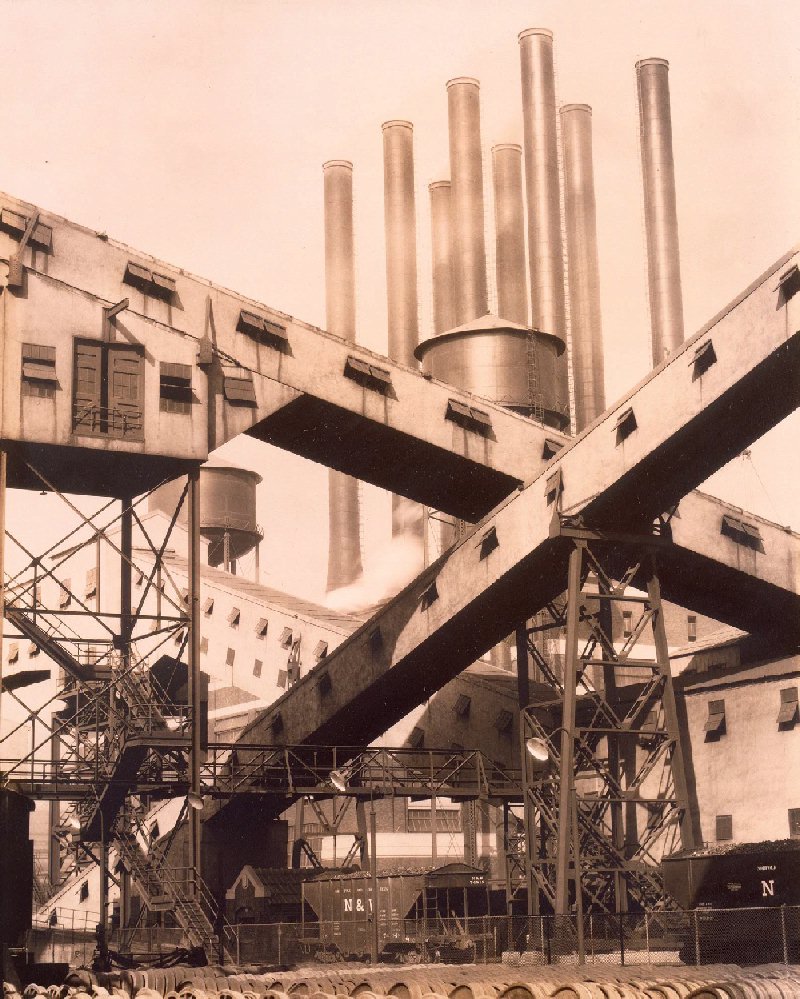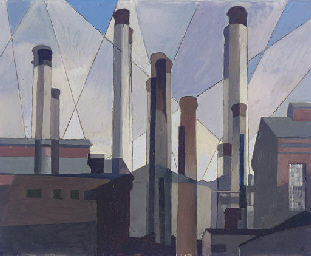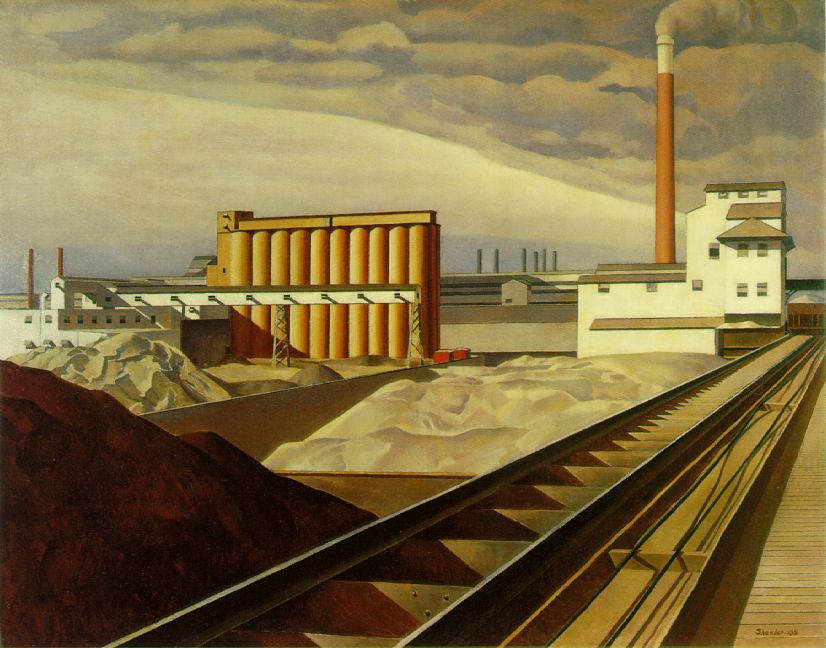Charles Sheeler
Charles Sheeler ( July 16, 1883 *, † May 7, 1965 ) was an American painter of realism. He is regarded as the main representative of Precisionism and as one of the best photographers of the 20th century.
Life
Charles Sheeler was born the son of a manager of a steamship company. He received at the School of Industrial Art in Philadelphia, and from 1903 at the Pennsylvania Academy of the Fine Arts, where William Merritt Chase was his teacher his training. In 1906 he graduated from the Academy and began working as a professional photographer since he alone could not stay afloat with the painting. In 1908 he traveled to Paris, as there Cubism with Georges Braque and Pablo Picasso began his ascent. Sheeler rented a 1910 farm house called Worthington in Doylestown, Pennsylvania, where he resided along with the artist Morton Schamberg until his death in 1918. In 1927 he was commissioned by the Ford Motor Company to photograph her work in River Rouge, Michigan.
Work
Sheeler began his career as a photographer; In these works, he focused mainly on the architecture. In 1920, he turned with Paul beach short film Manhatta, one of the first artistic films of the United States. His farmhouse in Doylestown and the surrounding area became his common motifs, including particularly the stove in one of the rooms. The most striking example is the work of The Interior with Stove of 1917.
The motif that offered him the job for Ford, Sheeler called " the most exciting by far, with whom I had to work so far. " His breakthrough Sheeler with the oil paintings American Landscape (1930) and Classic Landscape ( 1931). Both show factory building, which makes the naming particularly the latter work to a statement against the traditional landscape painting.
1938 Fortune magazine commissioned Sheeler to the execution of six paintings that " reflect life in forms and trace the fixed pattern of the human spirit. " Sheeler came to this order by first a year with the camera on the search for inspiration went and finally the painting Primitive Power ( a water wheel ), Steam turbine, Rolling Power, Suspended Power ( a water turbine ), Yankee Clipper ( a plane ) and Conversation: Sky and Earth delivered ( of a dam ). The works were published in the December issue of 1940.
Sheeler, the professing Präzisionisten, was repeatedly accused that he simply the paint what he had previously photographed. But as one example, be seen from the above painting Rolling Power from 1939 showing the wheels and the drive rod of a locomotive, make the paintings represent an idealized image of reality, without the dirt and wear, which could be seen in the photograph.









